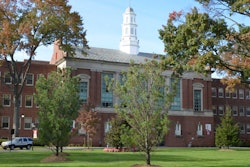Scientific and technological innovation has had a dramatic effect on today’s society and is a key driving force to the global economy. Such technological advances are the result of the most highly skilled workforce in the world. Unfortunately, both women and minorities have largely been underrepresented in science and engineering education and careers.
It has been sufficiently documented over the last several decades that there exists a great disparity in the number of minority graduates in science, technology, engineering and mathematics, or STEM, disciplines in the United States. Several decades of qualitative and quantitative research studies confirm that anemic minority student participation in STEM majors is attributed to many institutional and non-institutional factors. Increasing the active participation of underrepresented minorities, women and persons with disabilities in STEM fields must remain an important strategic goal in the 21st century.
A review of recent statistical findings from national datasets examines the percentage distribution of graduate students enrolled in STEM programs and a survey of earned graduate degrees by race present the current state of minorities in STEM graduate education. Data obtained from the National Center for Education Statistics, or NCES, Data Analysis System showed that, in 2004, African-Americans comprised 8 percent of the life science degrees and 6 percent of the math/engineering/computer science degrees. In 2008, African-Americans comprised 6 percent of the life science degrees and 5 percent of math/engineering/computer science degrees. Similar trends were also observed for other minority groups. NCES data revealed a slightly positive trend for Hispanic students. In 2004, Hispanic graduate students comprised 6 percent of the life science degrees and 6 percent of the math/engineering/computer science degrees. In 2008, Hispanic students comprised 7 percent of the life science degrees and 8 percent of math/engineering/computer science degrees.
Furthermore, data from the National Science Foundation, or NSF, also sheds light on the underrepresentation of graduate students earning science and engineering degrees. In 2009, African-Americans earned 9.5 percent of the science and engineering master’s degrees, Hispanics earned 6.7 percent of the science and engineering master’s degrees, and American Indian/Alaska Natives earned 0.6 percent of the science and engineering master’s degrees.
In terms of doctoral degrees, in 2009 African-Americans earned 1,041 science and engineering doctoral degrees, Hispanics earned 1,098 science and engineering doctoral degrees, and American Indian/Alaska Natives earned 120 science and engineering doctoral degrees. While an analysis of national data in some instances demonstrates slightly modest increases in STEM-related degrees for historically underrepresented students, NCES and NSF data demonstrate stark differences when compared to White students. In 2009, White students earned 61.7 percent of the science and engineering master’s degrees and earned 14,552 science and engineering doctoral degrees.
The overall problem of underrepresentation in STEM graduate education must continually be addressed at multiple levels to elucidate potential strategies designed to decrease underrepresentation in graduate education.
The NSF and other local, state and federally funded programs have provided leadership in improving the diversification of the scientific and engineering workforce.
At the individual student level a factor that contributes to high attrition rates among minority graduate students in science and engineering disciplines is the lack of student preparation for the academic rigors and scholarly challenges associated with success in graduate school. Moreover, I contend that a significant number of underrepresented students lack a firm knowledge of the challenges associated with the transition from an undergraduate education that focuses primarily on coursework to a graduate education that focuses on independent thinking and scholarly achievement through carefully designed research investigations.
At the federal level, the establishment of undergraduate STEM broadening participation programs such as the Research Initiative for Scientific Enhancement, or RISE, program; Ronald E. McNair Postbaccalaureate Achievement Program; and the Louis Stokes Alliance for Minority Participation, or LSAMP, program play a significant role in improving underrepresentation in STEM disciplines and careers. Program participants receive structured seminars, faculty-mentored research projects, opportunities to participate in national research conferences and GRE preparatory workshops.
A thorough understanding of graduate school requirements will facilitate the production of relevant graduate student strategies to improve academic outcomes.
Ultimately, incoming and current minority graduate students must understand that tremendous sacrifices have been made by previous generations for the privilege to pursue a graduate education and that, in the end, it is their responsibility to explore all avenues for success in STEM that extend well beyond the commencement stage. D
— Dr. Lawrence O. Flowers is an assistant professor of microbiology at Fayetteville State University.


















